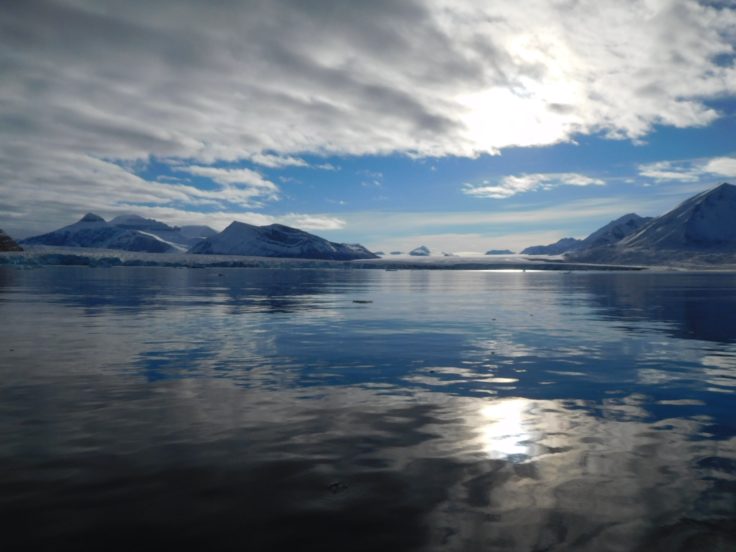Funding to assess shipping emissions and climate hazards
British Antarctic Survey (BAS) scientists have been awarded funding to enable them to assess the impact of emissions from shipping and to quantify and manage the risk of climate hazards.
The money comes from NERC’s recent funding injection in environmental research. Around £24 million has been split between 14 research projects spanning a wide range of topics generated by the UK environmental science community.
Shipping emissions
A team from University of Birmingham, University of Exeter, BAS and Cranfield University will embark on a new project to assess the impact of shipping emissions in the Arctic and North Atlantic on atmospheric composition, clouds and climate.
Global shipping is an important contributor to aerosol pollution, which is fine solid particles or tiny liquid droplets in the air, especially in remote marine regions. These aerosols can have a cooling effect on the climate. Shipping is currently undergoing significant changes, with new global maritime fuel regulations (with sulphur limit from 3.5% to 0.5%) and new climate-induced changes to available shipping routes in the Arctic.

This new research project, called SEANA, will carry out ground and ship cruise measurements to gain a clear picture of current atmospheric conditions against which the impacts of these changes can be determined and modelled.
BAS atmospheric scientist, Dr Anna Jones, says:
“The Arctic is a potentially important trade route and is opening up further to shipping as the sea ice reduces. This project provides an exciting opportunity to access remote areas so we can understand how the Arctic atmosphere may be influenced by changes in shipping. This new information will then inform future shipping policy and regulation.”
Climate ‘hazards’
A team from University of Exeter, University of Bristol, University of Edinburgh, National Centre for Atmospheric Science, National Oceanography Centre, BAS and University of Oxford will assess the impact of climate change on climate ‘hazards’ in the past and present and project forward their changes into the future.
EMERGENCE will use information from state-of-the-art climate models, including models with unprecedented fine detail. It will use cutting edge observations in order to constrain climate model predictions using changes already observed, drawing on new and improved analysis techniques (including event attribution, machine learning and feature tracking) that were not available or not widely applied during previous assessments of climate hazards from older models. The hazards to be addressed are: extreme heat stress events, tropical deluges and droughts, and storms with their associated extreme winds and rainfall. Information will be collated to form a snapshot summary of climate hazard risks that, in turn, will be an essential resource for policy makers.
The project’s assessments of the emergence of climate hazards will also feed into the next assessment of the Intergovernmental Panel on Climate Change (IPCC). The team assembled, including a number of leading climate science project partners from the Met Office, has a strong track record in IPCC and is thus ideally placed to provide this input and to further strengthen the profile of UK climate science in the international arena.
BAS climate scientist and mathematician, Dr Emily Shuckburgh, says:
“Climate hazards are weather and climate extreme events that can cause loss of life, injury or other health impacts, as well as damage and loss to property, infrastructure, service provision and environmental resources. These events are most likely influenced by global climate change in ways that we do not currently understand or have not yet properly quantified. We are focussing on the next 30 years because of the relevance of this time scale for strategies to build resilience to climate change produced by governments, businesses and individuals.”